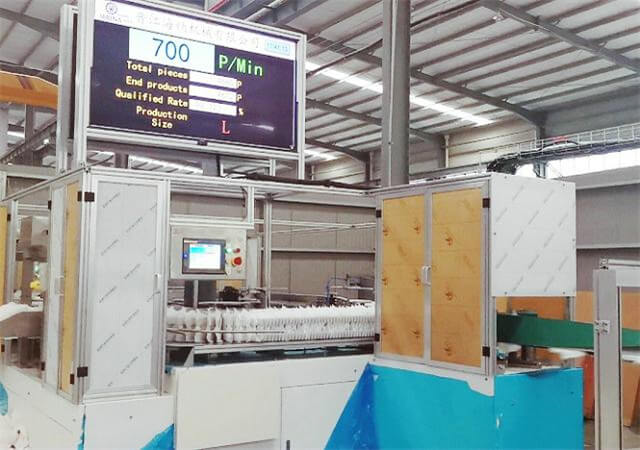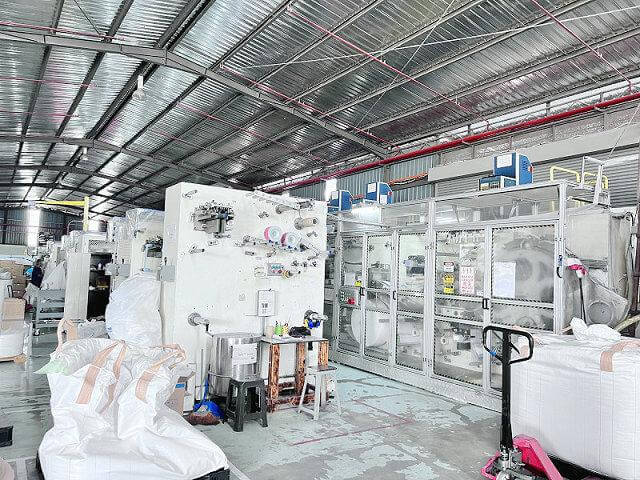Author:Haina Machinery Factory FROM:Diaper Machinery Manufacturer TIME:2023-11-01
Efficient Operation of a Feminine Napkin Machine

The production of feminine napkins plays a crucial role in meeting the hygiene needs of women worldwide. To ensure a steady supply of high-quality feminine napkins, it is essential to focus on the efficient operation of the manufacturing machinery. This article will explore various aspects of operating a feminine napkin machine efficiently, including raw material management, machine maintenance, product quality control, and automation.

Efficient raw material management is essential to optimize the operation of a feminine napkin machine. It involves careful planning and procurement of raw materials such as absorbent cores, top sheets, and back sheets. The procurement process should prioritize quality, cost-effectiveness, and timely delivery. Adequate inventory management practices, including just-in-time ordering and regular stock checks, can minimize waste and downtime due to material shortages.

Proper machine setup and calibration are crucial for the efficient operation of a feminine napkin machine. This includes adjusting machine settings, such as speed, tension, and temperature, to ensure optimal performance. Regular calibration of sensors and controls is necessary to maintain accuracy and consistency during the production process. Thorough training of machine operators on setup procedures and maintenance protocols is also essential.
Maintaining a regular maintenance schedule for the feminine napkin machine is vital to minimize breakdowns and maximize productivity. This includes routine inspections, lubrication of moving parts, and replacement of worn-out components. Implementing preventive measures, such as regular cleaning, dust removal, and alignment checks, can significantly reduce the chances of machine malfunctions and downtime.
Implementing robust quality control systems is essential for producing high-quality feminine napkins consistently. This includes thorough testing and inspection of raw materials, intermediate products, and finished products. Regular monitoring of product dimensions, absorbency, and adhesive strength ensures compliance with quality standards. Integration of automated quality control measures, such as vision inspection systems, can enhance efficiency and accuracy in detecting defects.
Automation plays a significant role in improving the efficiency of feminine napkin machine operations. Implementing automated processes, such as material feeding, cutting, folding, and packaging, reduces manual labor and improves productivity. Integration of sensors and control systems enables real-time monitoring and adjustment of machine parameters, leading to enhanced efficiency and consistency in product quality. Continuous process optimization, driven by data analysis and feedback, helps identify bottlenecks and streamline production flow.
Well-trained and skilled machine operators are essential for efficient operation. Providing comprehensive training on machine operation, maintenance, and troubleshooting equips operators with the necessary skills to handle any issues that may arise during production. Continuous skill development programs, including knowledge of new technologies and best practices, keep operators updated and improve overall machine efficiency.
Promoting energy efficiency and sustainability in the operation of a feminine napkin machine is not only environmentally responsible but also economically beneficial. Implementing energy-saving measures, such as adopting LED lighting, optimizing machine settings for reduced energy consumption, and utilizing renewable energy sources, can significantly reduce operational costs. Proper waste management and recycling practices further contribute to sustainable production.
Efficient operation of a feminine napkin machine requires a holistic approach that encompasses raw material management, machine setup and calibration, maintenance and preventive measures, quality control systems, automation, operator training, and energy efficiency. By implementing these strategies, manufacturers can ensure a smooth and continuous production process, resulting in high-quality feminine napkins that meet the demands of women worldwide.




